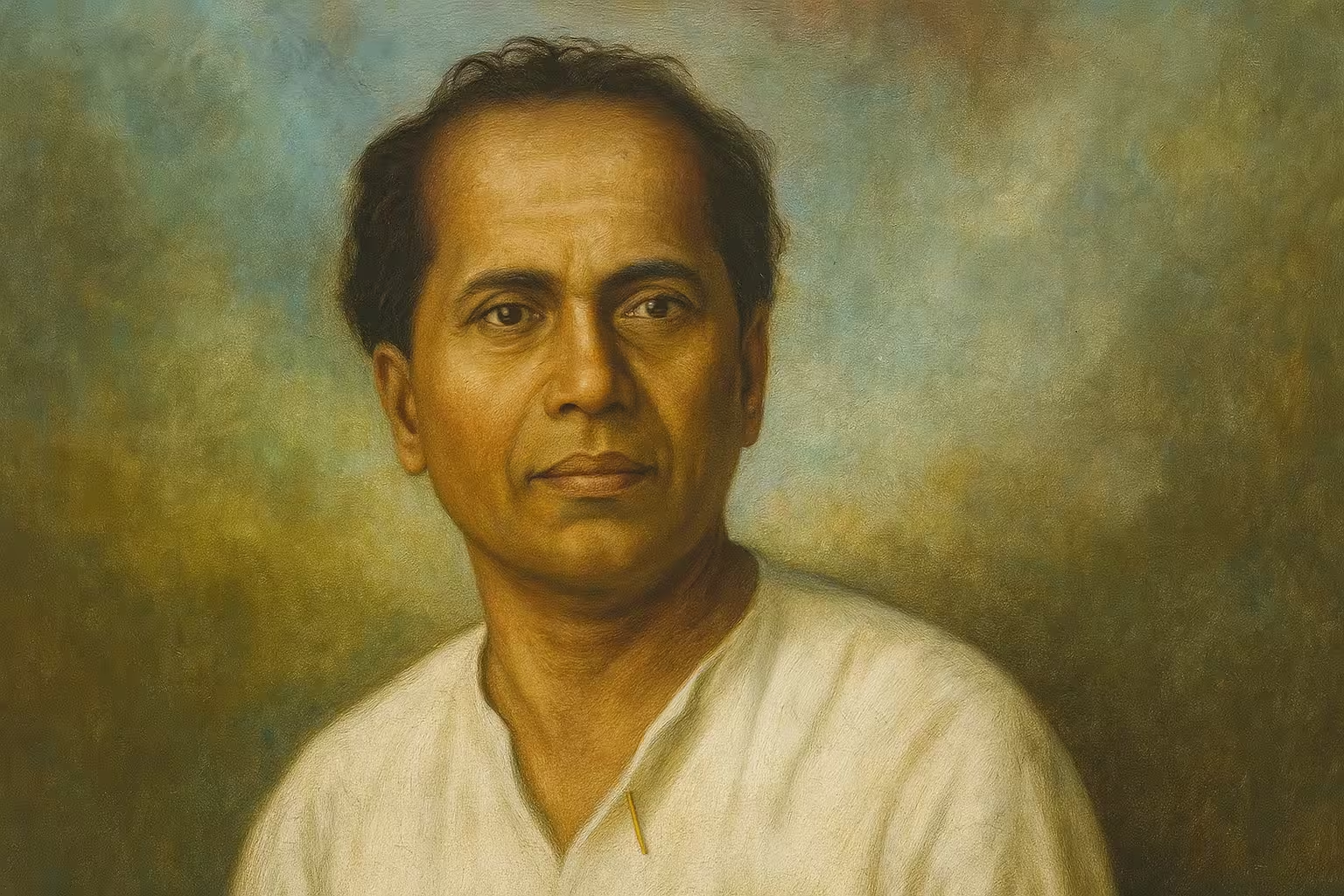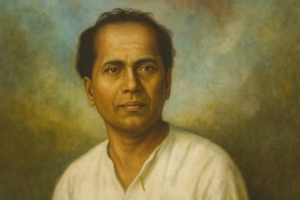Physical Address
304 North Cardinal St.
Dorchester Center, MA 02124
Physical Address
304 North Cardinal St.
Dorchester Center, MA 02124

Annabhau Sathe, one of the most influential social reformers and literary figures of Maharashtra, was not merely a writer but a movement in himself. Born into poverty and systemic caste discrimination, Sathe rose to become a beacon of hope for the marginalized and a towering figure in Indian literature. He gave voice to those long ignored by mainstream narratives and used the power of folk literature and storytelling to ignite social consciousness. His legacy lives on as a symbol of resistance, empowerment, and the indomitable spirit of human dignity.
Beyond his literary prowess, Sathe’s deep involvement in political activism, his empathy for the working class, and his enduring commitment to eradicating social inequality made him a multifaceted figure. He was not just a chronicler of pain and injustice, but also a beacon of hope, courage, and cultural resurgence for generations of readers and activists. His personal hardships became the raw material of his prose and poetry, which deeply touched the hearts of the common man. He broke the chains of silence that had historically bound Dalits and gave them the strength of expression.
Read Also: Bal Gangadhar Tilak: The Father of Indian Unrest and the Torchbearer of Swaraj
Annabhau Sathe was born on August 1, 1920, in Wategaon village of Sangli district in Maharashtra. His birth name was Tukaram Bhaurao Sathe, and he belonged to the Matang community—a Dalit caste subjected to untouchability and systemic discrimination. His early life was marked by extreme poverty, social exclusion, and lack of access to education. These hardships forced Sathe and his family to migrate to Mumbai (then Bombay) in search of livelihood. The city, with its bustling streets and harsh conditions, would become both his battleground and his muse.
The grim realities of urban slum life exposed Sathe to the crushing burdens of inequality and caste-based discrimination. His family settled in the slums of Bombay, where access to basic necessities was a daily struggle. But even amid poverty, Sathe displayed a remarkable resilience and curiosity. He learned to read and write in Marathi through self-effort and developed a fascination for folk music, traditional stories, and performance art.
This foundation—built not in classrooms but on the streets—shaped Sathe’s literary voice. He absorbed the sounds, sights, and stories of everyday people, especially the working class, and internalized their struggles, joys, and aspirations. The vibrant cultural life of Mumbai’s chawls played a significant role in nurturing his artistic sensibilities, exposing him to grassroots performances, music, and community gatherings that later formed the basis of his folk-style writing.

In Mumbai, Sathe worked various menial jobs—construction worker, factory laborer, porter—each revealing to him the depth of inequality and injustice in society. His experience in these harsh environments fostered a deep connection with the working class. It was during this period that he was introduced to the ideology of Marxism and became an active member of the Communist Party of India (CPI).
His association with the CPI marked a significant turning point in his life. He joined labor strikes, wrote revolutionary songs, and participated in street performances to mobilize workers and raise awareness. His transformation from a laborer to a writer-activist was organic and fueled by an unshakeable commitment to social justice. He used forms like “powada” (Marathi ballads), “tamasha” (folk theatre), and “loknatya” (people’s theatre) to convey his messages in an emotionally resonant and accessible manner.
Through his activism, Sathe realized that the stage could be a powerful platform for social education. He began scripting and performing street plays that focused on labor rights, caste discrimination, and gender injustice. His performances resonated deeply with the masses and earned him a reputation as a cultural warrior. These plays became a catalyst for change, challenging societal norms and igniting dialogue among ordinary citizens.
He also served as an inspiration for many first-generation writers and performers from marginalized communities. His success story proved that creativity and intellect are not exclusive to the privileged classes. His writings blurred the lines between politics and art, emphasizing that cultural expression could serve as an effective tool of resistance.
Annabhau Sathe emerged as one of the most prolific and powerful voices in Marathi literature. Over his lifetime, he authored 35 novels, 10 collections of short stories, several poems, one play, and numerous powadas and folk songs. Despite having no formal education, his command over narrative and his deep understanding of human suffering made his works relatable and poignant.
His most celebrated work, “Fakira” (1961), tells the story of a rebellious youth who fights against social injustice and the exploitative structures of society. The protagonist, Fakira, becomes a metaphor for resistance and the burning desire for change among the oppressed. The novel was widely acclaimed and won a state government award. It continues to be taught in schools and universities and is regarded as a milestone in Dalit and proletarian literature.
Other notable works include:
Sathe’s writing style combined raw emotion with cultural rhythm. He often employed local idioms, metaphors, and folk forms to enhance relatability and deepen the impact. His narratives captured the vernacular spirit and echoed the heartbeat of ordinary lives. He was also praised for his bold storytelling, often taking on taboo subjects and presenting uncomfortable truths about society without any sugar-coating.
Sathe believed that literature was not just about aesthetic beauty, but about truth and action. He advocated for purposeful writing—stories that disturb the complacent, uplift the downtrodden, and call out injustices wherever they occur.
Annabhau Sathe’s literature was centered around themes of caste oppression, class struggle, gender inequality, and social justice. His characters were often Dalits, workers, women, and other marginalized groups whose lives had been pushed to the peripheries. His writing did not romanticize poverty but revealed its brutal realities, making invisible lives visible through powerful storytelling.
He strongly believed that literature should not be an elitist activity but a tool for mass awakening. By using simple language and traditional folk forms, Sathe democratized literature and brought it to the streets. His work became the voice of the voiceless and an instrument of resistance against the social order.
Sathe’s characters were often flawed, complex, and human. They reflected real dilemmas—whether to resist or submit, to endure or rise, to speak or remain silent. Through these inner conflicts, he illustrated the moral strength of marginalized communities and the quiet, everyday heroism of those on the fringes.
His works were not only literary milestones but also served as social documents capturing the pulse of a generation in transition—from colonial rule to a newly independent yet unequal India. He raised questions about what true independence meant when social structures remained oppressive. For many readers, his stories provided validation, solidarity, and courage.
Sathe played a pivotal role in several social and cultural movements. He was a founding member of the Lal Bawta Kalapathak (Red Flag Cultural Troupe), which performed agitprop plays, songs, and skits to mobilize workers and spread awareness about class struggle, caste discrimination, and imperialism. This troupe was instrumental in bringing cultural resistance to the forefront of political activism.
He was also deeply involved in the Samyukta Maharashtra Movement, which fought for the formation of a separate Marathi-speaking state. Sathe’s compositions during this period inspired thousands to join the cause. He frequently collaborated with other left-leaning artists, poets, and activists, becoming a central figure in Maharashtra’s cultural revolution.
Through his cultural troupe and street performances, Sathe made art a participatory and collective experience. His events were interactive, inviting audience responses and discussions, blurring the boundaries between performer and viewer.
He believed that songs and stories could travel where politics couldn’t—and reach people who were otherwise untouched by academic or elitist discourse. His work helped politicize the cultural sphere in a way that was both inclusive and impactful.
Sathe’s presence in the social movement scene added immense moral weight to the causes he supported. His words carried credibility because they came from lived experience, not theoretical detachment.
In 1949, Sathe was part of an Indian cultural delegation to the Soviet Union. This trip had a profound impact on his thinking and literary approach. He was greatly influenced by Maxim Gorky, the Russian writer known for his portrayal of working-class life and his advocacy for socialist realism.
Sathe admired how Soviet literature used storytelling as a means of ideological education and mass mobilization. Upon returning to India, he adapted similar techniques in his own work, emphasizing realism, collective struggle, and the transformative power of unity. His global perspective enriched his local activism and brought international attention to the plight of India’s Dalits and workers.
He returned inspired by the possibility of aligning literature with revolutionary ideals. This phase of his writing began to incorporate elements of socialist realism and global working-class solidarity. His Soviet visit also earned him recognition among international leftist intellectual circles.
His experiences in the USSR further validated his belief that social revolution must be both cultural and political. It encouraged him to blend internationalism with local struggles, showing that the language of justice knows no borders.
Annabhau Sathe passed away on July 18, 1969, at the age of 48. Despite his short life, his impact was immense and long-lasting. Today, he is celebrated not only as a literary figure but also as a cultural revolutionary and a Dalit icon. His works are studied in universities, performed in folk festivals, and honored in countless ways.
Numerous institutions, roads, public halls, and libraries in Maharashtra are named after him. Statues and murals across the state pay tribute to his contributions. His birth anniversary is celebrated with great fervor, especially in Dalit communities. Documentaries, street plays, and folk performances continue to keep his spirit alive.
In 1990, the Government of Maharashtra instituted the Annabhau Sathe Development Corporation, aimed at uplifting the Matang community and promoting Dalit welfare. His influence on modern Dalit literature is unparalleled, and his approach continues to shape contemporary writers and activists who seek to challenge injustice.
Sathe’s commitment to social justice has also influenced contemporary Dalit literature and movements. Writers like Namdeo Dhasal and activists in the Ambedkarite movement have drawn inspiration from his fearless writing and life of struggle.
In academic circles, Sathe is studied not just as a writer but as a theorist of social change. His body of work continues to inspire research, debates, and reinterpretations in the context of modern identity politics, anti-caste movements, and cultural theory.
Annabhau Sathe’s life was a living example of how literature, when wielded with purpose and passion, can become a force for revolution. From a daily wage laborer to a celebrated author, his journey embodies resilience, awareness, and the unyielding quest for equality. He gave identity to the invisible and pride to the humiliated.
Even decades after his passing, his voice continues to resonate in the hearts of those who believe in justice, dignity, and humanity. Annabhau Sathe was not just a writer of his time—he was a writer for all times, whose words will echo as long as inequality exists.
In remembering Annabhau Sathe, we are reminded that storytelling is not merely a cultural act, but a revolutionary one. His legacy urges us to listen to those on the margins, to amplify unheard voices, and to continue building a world rooted in equity and empathy. He made it clear that literature is not neutral—it must either serve oppression or liberation. Sathe chose liberation, and in doing so, he lit a torch that continues to shine across generations.
Read Also: How to Perform Shravan Somvar Puja? Complete Guide, Rituals, and Significance